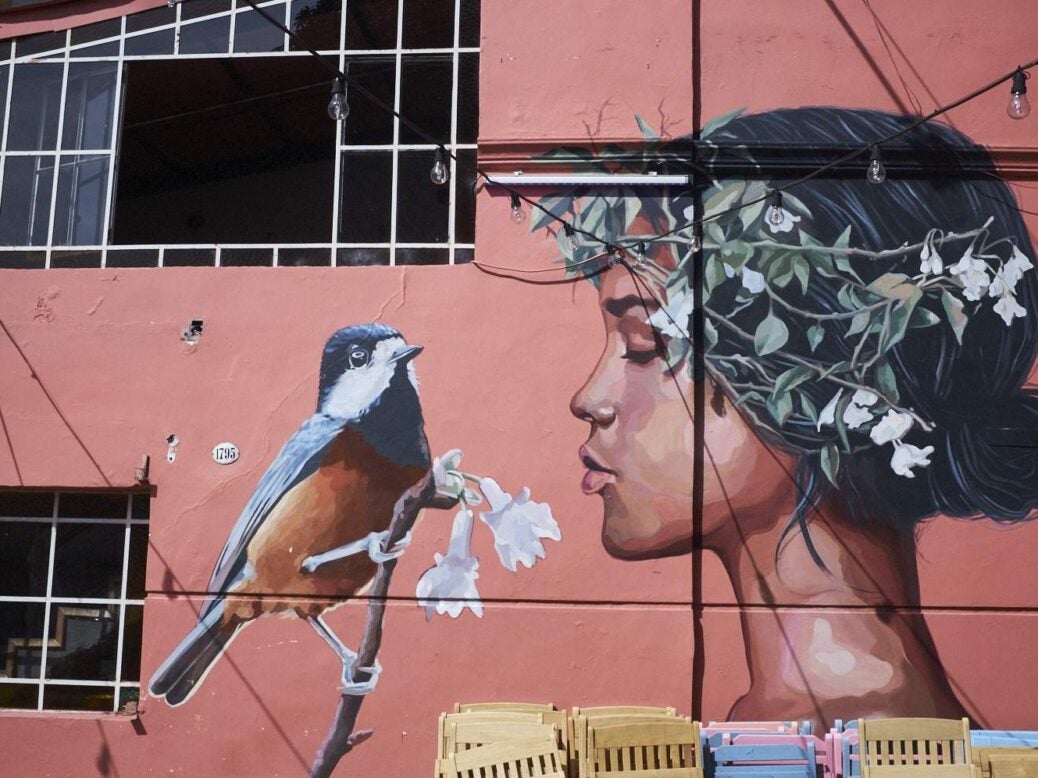
With direct routes from Gatwick and Los Angeles, Buenos Aires has become more convenient – which is great news for fans of tango and Belle Epoque luxury, says Lucille Howe
‘Wait!’ Yells the man in the caramel leather boots as he releases me from our embrace, his hairline glistening with perspiration, scoring the air with his hands. ‘Feel the music.’
This is Carlos Copello; tango legend, milonguero, gentleman. Copello counts Francis Ford Coppola and Robert Duvall as friends after he joined the cast of their film Assassination Tango, and as he scrolls through his iPhotos from earlier that week, pop star Katy Perry looms large in a joint selfie. It’s clear that if you’re in town to tackle the obsession made famous in the Parisian-style dance halls of the city, Copello is your man.
With an ‘in’ from bespoke travel company Dehouche, my partner and I are being coiled and corrected across the floor of his studio in the outskirts of Recoleta. Outside, the colourful street art is getting a battering from a tropical downpour as flurries of feet dodge the puddles. Indoors, we are fuelled by the national drink, mate – a bitter herbal tea, drunk through a metal straw. It’s a welcome stimulant and helps us scissor and pivot with more attention to the subtle body language that communicates the next move in this seductive dance.
Copello still regularly performs in the exclusive Rojo Tango Show at the Philippe Starck hotel Faena, where we head that night. Faena, in Puerto Madero, is like a David Lynch architectural fantasy. The fine dining space is inventive and opulent, with unicorn heads mounted on the walls.
The swimming pool boasts an oversized crown befitting of the Red Queen in Alice in Wonderland, flanked by perfectly sculpted topiary and a red-brick warehouse façade that might look more at home in New York’s Meatpacking district.
Pre-show, you should enjoy the hotel’s El Mercado restaurant, styled with a nod to the city’s San Telmo market, with glass-fronted cabinets of retro trinkets and a ceiling made of old-gold panels from markets across Europe.
Vegetarians are forgiven in this city but pitied too, and the mud oven bakes sublime briskets of beef. The ‘Concrete’ Malbec from producer Sebastian Zuccardi, who stores his wines in concrete, is a smooth, slightly metallic, sexy and ultra-modern take on the Argentine export.
Ask advice from Colombian sommelier Alvaro Sierra, who believes: ‘Wine and food polish the differences between people.’ Voted one of the best festivals on earth in 2018, the International Tango Festival takes place in August, but year-round the Roja Tango Show is the classiest collection of dancers, performing with a nod to the erotic choreography of the Crazy Horse Paris cabaret, as well as classic showstopping pieces that remind you the dance began as a knife fight between feuding rivals. For an experience that money (almost) can’t buy, ask for seating in the orchestra, where just one or two lucky couples can be accommodated. Here, we watch the double bass player spar with the accordionist.
Two worlds
The housing of the Rojo Tango Show at Faena is the perfect example of how the classic and contemporary sit side by side in this city. Contemporary talent on the food scene comes in the confident and unconventional skills of Pedro Bargero at the nearby Chila riverside restaurant.
Just 28, Bargero came to cooking after a degree in economics and advice from his uncle to ‘try something using your hands’. Influenced by the experimental style of Heston Blumenthal but more wholesome, and explorative of local ingredients, Bargero is perched over a scientific-looking setup: ‘It’s fish, slow-cooked at 55°C – just right.’
‘Next, I’m preparing yacaratia, a product of Argentina. It’s weird. It’s got a cool texture. It’s so versatile you can use it with something acidic, or equally with cheese.’ Bargero likes to share a joke with his clientele, and the tasting menu – the only menu the restaurant offers – is full of delightful theatrics, trickery and choices.
One dish comes on a wooden platter that looks like a puzzle that needs solving; one requires you to break a seal; another is in a box of cocoa that looks like a flower bed. New talent in the city also includes French art curator Olivier Leveaufre, 36, who co-runs Quorum, an art space in San Telmo. ‘There were few places to show and we knew a lot of artists,’ says Leveaufre.
That the government subsidises street art informs much of the style of young graduates, who see it as the democratic expression of the people. If you travel the 14 hours from London to Buenos Aires, you may want to escape the city for a leisurely weekender, and Tigre is that place.
The suburb is an hour’s journey north, previously a Belle Epoque destination for the elite class at the beginning of the 20th century before interest moved towards the Atlantic beaches. Today, the muddied waterways, fringed by weeping willows, are a playground for boat clubs, jetskiing and fishing. Exclusive spas and gated communities offer privacy and discretion for guests on remote and leisure-focused islands across the delta, where five rivers meet.
The Tigre Art Museum, built in the French-Italian style in 1912, is an opulent home to a permanent collection of figurative art, housed amid marble staircases, Venetian mirrors and bronze railings. With its European class combined with its passionate Latin onda (vibe), Buenos Aires is progressive, diverse and vibrant. To call it ‘the Paris of the South’ is doing it a disservice.
With thanks to Dehouche, a British-run travel specialist with offices in Brazil and Argentina that offers personalised experiences of South America Click here for more information
images: Rama Knight
Read more













